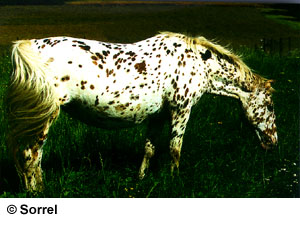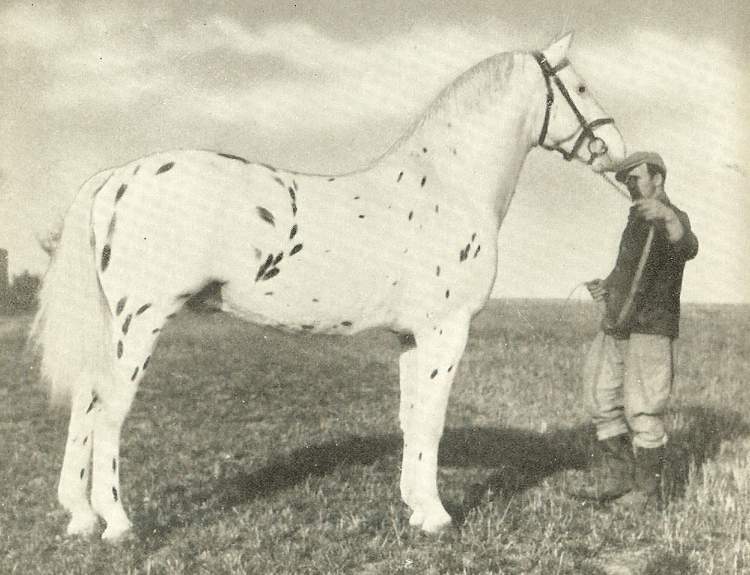

Knabstrup


Introduction: If you have any comments or suggestions, please click here. It may be possible to see from the pictures the difference between the modern and traditional Knabstrup. The former (above left) is more like an Appaloosa, whereas the traditional Knabstrup (above right) bore a strong resemblance to the old Spanish horse (and a great deal of the latter's blood). The picture on the right is of a stallion named Silver King II.
Names: Knabstrup, Knabstruper. The former is more common and shorter so I will probably use it.
Origin: Denmark,
particularly Zeeland. Descended
from Flaebehoppen, a speedy spotted mare of great endurance and Spanish
breeding, left in Denmark by Spanish troops during the Napoleonic wars.
Called also the Danish spotted horse, it is a type of the
Frederiksberg coach or utility horse. It is grey or white with "leopard"
spotting. The foundation sire of the Knabstrup breed was a Frederiksberg
stallion of palomino color bred in 1812 to a famous spotted mare named "Flaebehhoppen,"
which had been left behind in Denmark by Spanish officers during the Napoleonic
Wars.
Breeding: Originating at the same stud and akin to Frederiksborgs, Knabstrups differ chiefly in color. Apparently, this is actually a branch of the Frederiksborg, but lighter.
Description: These horses have sometimes been bred for spots at the expense of other considerations. Today many so called Knabstrups bear small resemblance, except for spots, to those which were once the darlings of the European Royal Courts. Lighter built than the Frederiksborg.
Color: Always spotted. Usually white with black spots. Colour almost exclusively spotted grey (white).
Size: About 15 hands.
Temperament:
Features: Fast and hardy.
Uses: Originally an elegant, refined coach horse. Now popular as a circus horse and for other special purposes.
Accomplishments: Fredy Knie, the famous Swiss circus trainer, used many Knabstrups in his spectacular acts.
Curiosities:
Profiles:
Conclusion: